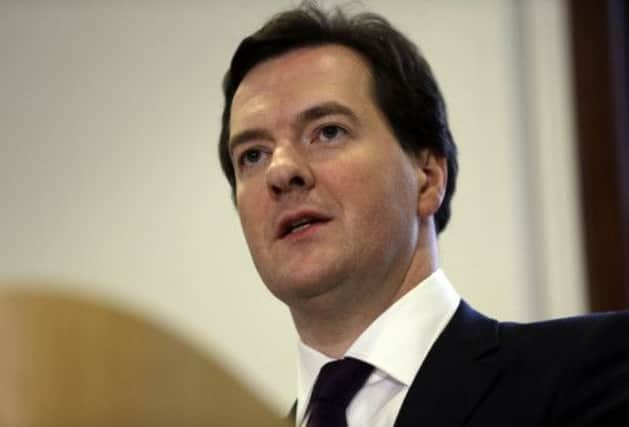Gerald Warner: Osborne’s cabaret of smoke and mirrors


Until the advent of the locust years in 2008, the statutory obligation to make two Treasury statements per annum (dating from 1976) had inflated this occasion into a secondary Budget, but that impetus has receded and last week’s statement was more in the traditional mould, apart from some transparent pre-election bribes.
The burden of George Osborne’s song was that the medicine is working, the economy is on course to recovery, the deficit will be reduced according to plan and, generally, that George got it all marvellously, infallibly right and all the scoffers and nay-sayers got it wrong. The Chancellor had some difficulty in articulating this message, not on account of its glaring implausibility but because of the state of anarchy prevailing in the House of Commons.
Advertisement
Hide AdAdvertisement
Hide AdThere is nothing our tribunes enjoy more than to comport themselves like football hooligans when matters crucial to the well-being of the public are being discussed in the cesspit of the nation.
Undeterred by this uproar and by the distressing distraction of the shadow chancellor suffering a nervous breakdown on the opposing front bench (common humanity demands that Ed Balls be politically euthanased), George presented his cabaret of smoke and mirrors. Some of it was so extravagant that neutral observers felt obliged to demur. The Chancellor’s statement that disposable income increased by 0.5 per cent this year and will grow by 1.1 per cent next year was challenged by the Institute for Fiscal Studies, which described the figures as “strange”, said Labour’s claim that families are now £1,600 a year worse off was, in its broad thrust, “correct” and forecast that households will be “substantially” worse off in 2015 than in 2010. The Treasury Select Committee is to interrogate the Chancellor about this.
The Big Lie at the heart of the Osborne/Tory spin is the myth about “tackling the deficit”. In reality, government spending is still rising. In the latest reported quarter for 2013, expenditure increased by 0.9 per cent, the fourth consecutive quarterly increase. Office for National Statistics (ONS) figures show that in 2012–13 government net borrowing was £82.1bn, equivalent to 5.2 per cent of GDP.
George’s Treasury spinfolk will eagerly pounce on this and point out that figure was down from 7.6 per cent of GDP in 2011–12. What they will not point out is that this result was obtained by two fiscal ploys: the asset purchase facility transfers early this year which lowered borrowing by £6.4bn and the transfer of Royal Mail Pension Plan assets last year which reduced borrowing by £28bn.
The two transactions diminished borrowing by 2.2 per cent of GDP; without them, the rate would have been 7.4 per cent, virtually unchanged from the previous year. So, the notion that dogged austerity, led by Hair-Shirt Gideon and supported by a populace of self-flagellants, is whittling down the deficit is an illusion. That charade is being maintained by the Treasury through a variety of devices so arcane they would provoke the envy of Gordon Brown. The underlying reality is that to meet the deficit reduction targets for 2017 a further £10bn must be found in tax increases or spending cuts.
Meantime, in this supposedly Spartan economy, the national debt is increasing at a rate of £121bn a year. George’s interpretation of austerity has been to borrow £2bn a week – which makes one wonder why we did not leave Fred Goodwin in charge of the RBS recovery.
If the full exposure of George Osborne’s charlatanry is yet to come, many of his opponents’ nostrums have already been exploded, among them Labour’s self-interested scepticism regarding the capacity of the private sector to replace public-sector job cuts.
Last week’s statement revealed that business has created three jobs for every one axed in the public sector, while an Office for Budget Responsibility report forecast this will continue, with 3.1 million further private-sector jobs predicted to offset one million lost in the public sector by 2019.
Advertisement
Hide AdAdvertisement
Hide AdThe biggest casualty of leftist mythology was the “unfair” tax cuts for the rich mantra. HMRC figures show the top 1 per cent of earners (those on £160,000 or more a year) now pays 29.8 per cent of all income tax, despite the reduction of the top rate to 45p; the richest 0.1 per cent contributes 14.1 per cent of all income tax. Laffer curve, anyone?
Nor has the reduction of corporation tax reduced the business tax take. These fiscal figures invite wistful speculation as to how we might now be thriving, if only we had a Tory Chancellor and government. Sadly, that will never happen again – at least, not under the label “Conservative”. «
Twitter: @GeraldWarner1